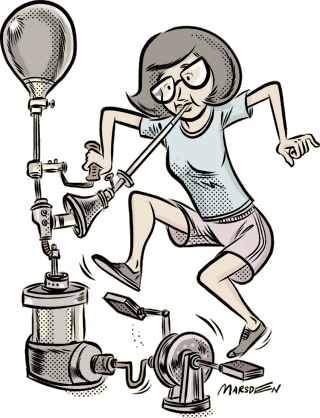| |
|
|
 |
|
| |
|
In exercising mammals, the two predominant substrates sustaining energy expenditure in the muscles are lipids and carbohydrates. In general the pattern of fuel use across exercise intensity is similar across mammals. We investigate the mechanisms that explain this conservation and species that deviate from this pattern.
Lipids are an important fuel source, signalling molecule and membrane component. We examine the genomic and nongenomic regulation of mitochondrial fat oxidation.
Sample publications:
Templeman, N.M., Schultz, H., Garland, T., and McClelland, G.B. (2012) Do mice selectively bred for high locomotor activity have a greater reliance on lipids to power submaximal aerobic exercise? Am. J. Physiol. 303:R101-R111.
Le Moine, C.M.R., Morash, A.J., and McClelland, G.B. (2011) Role of HIF-1α and pyruvate dehydrogenase phosphorylation in exercise blood lactate changes with the transition from acute to chronic hypoxia. Am. J. Physiol. 301:R1098-R1104.
Morash, A.J., Le Moine, C.M.R., and McClelland, G.B. (2010) Genome duplication events have lead to a diversification in the CPT I gene family in fish. Am. J. Physiol. 299: R579 - R589.
McClelland, G.B., Lyons, S.A., and Robertson, C.E. (2017). Fuel use in mammals: conserved patterns and evolved strategies for aerobic locomotion and thermogenesis. Integr. Comp. Biol. 57(2):231-239. |
|
| |
|
| |
|
| Funding: |
|
| Research in the McClelland Lab is currently being funded by the National Sciences and Engineering Council (NSERC), PREA and a CFI New Opportunities Grant. |
|
| |
|
 |
|
| |
|
 |
|
| |
|
 |
|
| |
|
| |
|
|